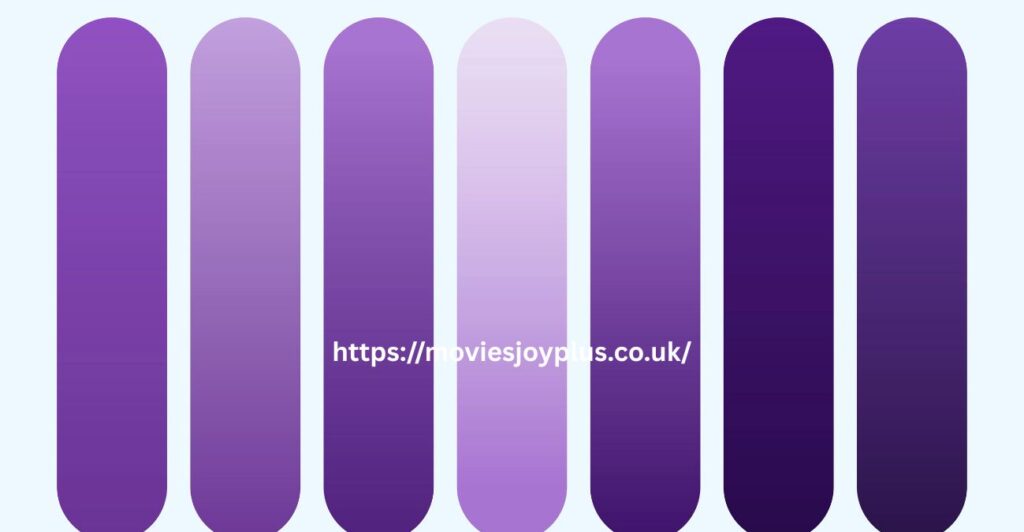Color is one of the most powerful tools in the world of design. It has the ability to influence emotions, convey messages, and make a lasting impression. Among the vast spectrum of colors, purple stands out for its unique combination of mystery, luxury, and creativity. Understanding how to use purple effectively in digital and print media begins with a firm grasp of its variations — and that’s where the purple hex code comes into play.
The Significance of Purple in Design
Historically associated with royalty and spirituality, purple has always held a special place in visual culture. It was once one of the most expensive pigments to produce, reserved for kings, emperors, and religious figures. Today, purple retains much of that mystique but is also widely used in branding, fashion, interior design, and user interface design.
Purple can evoke a range of emotions depending on its shade. Lighter purples, such as lavender, often suggest calmness and romance, while darker purples like indigo or plum convey depth, elegance, and strength. Designers often choose purple when they want to communicate creativity, imagination, or spiritual themes.
What Is a Hex Code?
In the world of digital design, colors are defined using hex codes. A hex code is a six-digit combination of numbers and letters preceded by a hash (#) that represents a specific color in web design and software applications. Each hex code corresponds to a specific mixture of red, green, and blue (RGB) values.
For example, the hex code #800080 represents a deep, rich purple. This system allows for consistent color reproduction across different devices and platforms, ensuring your design looks the same everywhere.
Understanding hex codes allows designers to make precise color choices, mix hues effortlessly, and create cohesive palettes that enhance the user experience. It’s also essential for branding, where color consistency can build recognition and trust.
Exploring the Spectrum of Purple
Purple is not just one single color but rather a family of shades ranging from cool to warm tones. Here are some common variations of purple, along with their hex codes:
- Lavender (#E6E6FA): Soft and calming, often associated with relaxation and springtime.
- Amethyst (#9966CC): A gem-inspired tone that suggests luxury and sophistication.
- Plum (#8E4585): Deep and dramatic, great for high-contrast designs.
- Orchid (#DA70D6): Bright and vivid, ideal for youthful or playful branding.
- Violet (#EE82EE): A light purple that works well in creative or feminine designs.
Using these shades strategically can elevate your design and communicate specific emotions or messages. For instance, a wellness brand might use lavender to promote a sense of peace, while a high-end cosmetics brand might lean into plum or amethyst to convey elegance.
Why Use the Purple Hex Code?
The precise use of a purple hex code is crucial in modern design because it allows for accuracy and consistency. Whether you’re working on a website, app interface, digital ad, or print material, using the correct hex code ensures the intended hue appears exactly as desired.
This consistency is especially vital for branding. Imagine a company that uses a particular shade of purple in its logo. If different departments or designers use slightly different shades, it can dilute the brand’s visual identity. By specifying the hex code in brand guidelines, companies maintain a unified appearance across all platforms.
Additionally, hex codes make collaboration easier. Designers, developers, marketers, and clients can communicate clearly and efficiently when everyone references the same code. It eliminates guesswork and speeds up the creative process.
Purple in Branding
Many well-known brands use purple as a key component of their visual identity. Here are some prominent examples:
- Cadbury: Known for its rich, royal purple packaging that suggests indulgence and tradition.
- Yahoo!: Uses purple to convey originality and approachability.
- Twitch: The streaming platform’s vibrant purple reflects creativity and innovation.
- Hallmark: Combines purple with gold to signify premium quality and heartfelt emotion.
Each of these brands uses a specific purple hex code to achieve a consistent and recognizable look. The choice of purple helps them stand out in competitive markets while appealing to their target audience.
How to Incorporate Purple into Your Designs
Whether you’re designing a website, creating a logo, or developing social media content, here are some tips on how to incorporate purple effectively:
1. Use as an Accent Color
Purple is powerful, so a little goes a long way. Use it for buttons, borders, or call-to-action elements to draw attention without overwhelming your audience.
2. Combine with Complementary Colors
Purple pairs well with a variety of colors. Yellow and gold create a luxurious contrast. Teal or turquoise introduces a fresh, modern vibe. For a more subdued palette, try pairing purple with neutrals like gray or white.
3. Consider the Mood
Think about what kind of message you want to convey. Lighter purples can make your design feel soft and romantic. Darker purples are better for formal, bold, or mysterious designs.
4. Adapt for Accessibility
Ensure that your chosen shade of purple has sufficient contrast against background elements for readability and accessibility. Tools like WebAIM’s color contrast checker can help verify your design’s compliance with accessibility standards.
5. Use in Gradients
Purple shines in gradient backgrounds, especially when transitioning into blues, pinks, or oranges. These gradients add depth and dimension to your designs, making them more visually engaging.
Psychological Effects of Purple
Color psychology is a critical element of design, and purple is particularly fascinating in this regard. Here’s how people tend to interpret purple:
- Creativity: Purple is often linked with imagination and inspiration. That’s why it’s popular in industries like design, music, and tech.
- Wisdom: The color has spiritual connotations and is associated with enlightenment and deep thought.
- Luxury: Its historical connection to royalty makes purple a go-to for premium brands.
- Calmness: Lighter tones like lilac and lavender promote relaxation and are often used in wellness and healthcare sectors.
By understanding these associations, you can tailor your use of purple to match the tone and purpose of your project.
Web Design and the Purple Aesthetic
In modern web design, purple is used to create immersive, visually appealing experiences. A site that uses purple effectively can guide users’ emotions, draw attention to important elements, and reinforce brand values.
Responsive design ensures that colors, including purple hex codes, render correctly on various devices. With tools like CSS and modern web design platforms, applying hex codes is as easy as typing color: #663399; into your stylesheet.
Developers can use pre-made color palettes or create custom themes centered around specific purple hues. Platforms like Adobe Express and Figma allow you to import color codes and build templates that adhere to your brand’s visual style.
Purple in Print Design
In print media, purple is often used for invitations, packaging, and advertising materials. However, unlike web design, print uses the CMYK color model instead of RGB or hex. Still, designers often start with hex codes to visualize the color and then convert them for printing purposes.
Pantone colors, which are standard in the printing industry, also include many shades of purple. You can use Pantone conversion tools to match your digital hex code to a CMYK equivalent for high-quality printed results.
Tools to Find the Perfect Purple
Several online tools can help you find and experiment with purple hex codes. Here are some popular resources:
- Adobe Color: Create color palettes, explore trends, and find matching hex codes.
- Coolors.co: Generate harmonious palettes, lock favorite colors, and export directly to design apps.
- HTML Color Codes: Browse an extensive library of color codes, including purples, and get RGB and HSL values.
These tools are invaluable for designers who want to explore different shades, test combinations, and maintain consistency.
The Future of Purple in Design
As visual trends continue to evolve, purple remains a favorite among creatives for its ability to balance warmth and coolness, boldness and subtlety. With the growing popularity of digital art, interactive media, and immersive branding, purple’s role will only expand.
Virtual and augmented reality platforms are beginning to explore deeper levels of color interaction, and designers are experimenting with more expressive and personal color palettes. Expect to see more gradients, iridescent effects, and layered hues that push the boundaries of traditional design.
Conclusion
Color is the heartbeat of design, and purple is one of its most expressive beats. From ancient symbolism to modern branding, purple carries meaning, emotion, and beauty. Whether you’re working on a digital campaign, rebranding a business, or creating an art piece, the purple hex code is your key to unlocking its full potential.
By understanding how to use hex codes, exploring different shades, and applying color psychology, you can elevate your work and captivate your audience. So, the next time you’re crafting a design that demands creativity and elegance, don’t hesitate to dip into the world of purple — one hex code at a time.

